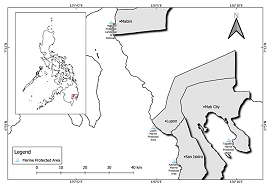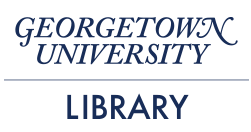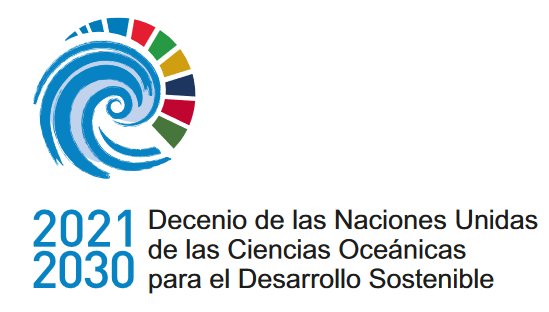Tendencias en la captura de pescadores artesanales cerca de áreas marinas protegidas en el sureste de Filipinas
DOI:
https://doi.org/10.47193/mafis.3832025010706Palabras clave:
Artes de pesca, manejo de pesquerías, área marina protegida, monzón, peces de arrecifeResumen
Los pescadores dependen en gran medida de los recursos marinos para su alimentación e ingresos, lo que puede llevar a la sobreexplotación de los recursos. El blanqueamiento de corales, los impactos del cambio climático, la sobrepesca, la contaminación marina y la pesca ilegal representan amenazas para los ecosistemas marinos, lo que exige iniciativas de conservación como el establecimiento de áreas marinas protegidas (AMPs). Este estudio se centró en las tendencias de captura de los pescadores artesanales ubicados cerca de las AMPs en Mati, Mabini, San Isidro y Lupon, sureste de Filipinas. Describe las tendencias de captura y el esfuerzo pesquero (CPUE) en las AMPs gestionadas localmente en la región de Davao y algunas de sus implicaciones. La recopilación de datos se realizó a través de censos de captura efectivamente desembarcada, basados en la evaluación participativa de capturas. Las artes de pesca representadas en los sitios de estudio incluyeron nasas, fusiles submarinos, palangre, línea de cacea, línea y anzuelo, líneas de mano múltiples y redes de enmalle. Se cuantificó la frecuencia de captura de los diferentes sitios de estudio (Mati = 2,1-4,0 kg viaje-1, Lupon = 10,1-20,0 kg viaje-1, San Isidro = 2,1-4,0 kg viaje-1, Mabini = 0,1-2,0 kg viaje-1) y mostró tendencias decrecientes. Tales circunstancias exigen una aplicación estricta de las zonas de veda dentro de las AMPs establecidas para generar mayores rendimientos a largo plazo y beneficios para las comunidades locales. Además, existe la necesidad de un mantenimiento de registros precisos utilizando bases de datos para todas las AMPs, ya que la documentación de la recuperación de las AMPs se basa en fuentes de datos creíbles. Las AMPs bien protegidas han mostrado un rendimiento pesquero abundante y ecosistemas marinos saludables que fomentan el ecoturismo y mejoran la conciencia sobre la conservación marina. Las actividades de ecoturismo dentro de las AMPs pueden ayudar a equilibrar el desplazamiento espacial y económico de los pescadores que anteriormente pescaban en los sitios de las AMP.
Descargas
Referencias
Abesamis RA, Alcala AC, Russ GR. 2006b. How much does the fishery at Apo Island benefit from the spillover of adult fish from the adjacent marine reserve? Fish Bull. 104 (3): 360-375.
Abesamis RA, Russ GR, Alcala AC. 2006a. Gradients of abundance of fish across no‐take marine reserve boundaries: evidence from Philippine coral reefs. Aquat Conserv. 16 (4): 349-371.
Abreo NAS, Macusi ED, Blatchley DD, Cuenca GC. 2016. Ingestion of marine plastic debris by green turtle (Chelonia mydas) in Davao Gulf, Mindanao, Philippines. Philipp J Sci. 145 (1): 17-23.
Alcala AC, Russ GR. 2006. No-take marine reserves and reef fisheries management in the Philippines: a new people power revolution. Ambio. 35 (5): 245-254. DOI: https://doi.org/10.1579/05-A-054R1.1
Aliño PM, Atrigenio MP, Quibilan MCC, Tiquio MGJ. 2004. The significance of coastal ecosystem stewardship to fisheries productivity. In: Turbulent seas: the status of Philippine marine fisheries. Cebu City: Department of Agriculture, Bureau of Fisheries and Aquatic Resources. p. 79-83.
Ambal RGR, Duya MV, Cruz, MA, Coroza OG, Vergara SG, de Silva N, Tabaranza B. 2012. Key biodiversity areas in the Philippines: priorities for conservation. Threat Taxa. 4 (8): 2788-2796.
Añasco CP, Monteclaro HM, CatedrillaLC, Lizada JC, Baylon CC. 2021. Measuring small island disaster resilience towards sustainable coastal and fisheries tourism: the case of Guimaras, Philippines. Hum Ecol. 49 (4): 467-479.
Anticamara JA, Go KTB. 2016. Spatio-temporal declines in Philippine fisheries and its implications to coastal municipal fishers’ catch and income. Front Mar Sci. 3: 21. DOI: https://doi.org/10.3389/fmars.2016.00021
Appelman M. 2015. A catch per unit effort (CPUE) spatial metric with respect to the Western North Atlantic pelagic longline fishery [master thesis]. Fort Lauderdale: Nova Southeastern University. https://nsuworks.nova.edu/occ_stuetd/36.
Arceo HO, Alino PM, Gonzales ROM. 2008. Where are we now with marine protected areas? In: Coral reef information network of the Philippines (PhilReefs). Reefs through time: initiating the state of the coast’s reports. Quezon City: MPA Support Network, Marine Environment and Resources Foundation and Marine Science Institute, University of the Philippines. 152 p.
Armada NB. 2002. Fishery resources assessment of Davao Gulf, Philippines. In: Resource and social assessment of Davao Gulf, Philippines. University of the Philippines Visayas: Miagao.
Balisco RAT, Tahajudjin CJD, Vigonte AC. 2019. Fishing gears and their common catch in two coastal areas of Palawan, Philippines: implications to fisheries management. Int J Fish Aquat Stud. 7 (2): 216-222.
Barboza A, Macusi ED, Borazon EQ, Santos MD, Muallil RN, Nallos IM. 2024. Small-scale fisheries (SSF) management and conservation schemes and their application in the Philippines. Mar Policy. 161: 106018.
Behivoke F, Etienne MP, Guitton J, Randriatsara RM, Ranaivoson E, Léopold M. 2021. Estimating fishing effort in small-scale fisheries using GPS tracking data and random forests. Ecol Indic. 123: 107321. DOI: https://doi.org/10.1016/j.ecolind.2020.107321
Bell JD, Kronen M, Vunisea A, Nash WJ, Keeble G, Demmke A, Andréfouët S. 2009. Planning the use of fish for food security in the Pacific. Mar Policy. 33 (1): 64-76. DOI: https://doi.org/10.1016/j.marpol.2008.04.002
Bobiles RU, Nakaruma Y. 2019. Partially protected marine areas as a conservation tool for commercially important fishes in the Philippines: Do age, size, and design matter? Reg Stud Mar Sci. 25: 100459. DOI: https://doi.org/10.1016/j.rsma.2018.100459
Burgess G, Johns K. 1999. Commercial shark fishery observer program: analysis of the large coastal shark fishery - July and August 1998 season in the south-eastern United States, with a review of the 1998 commercial shark fishery in the region. Final Report to Highly Migratory Species Division. Silver Spring: National Marine Fisheries Service. 19 p.
Cabral RB, Aliño PM, Balingit ACM, Alis CM, Arceo HO, Nañola Jr CL, Geronimo RC, Partners MSN. 2014. The Philippine Marine Protected Area (MPA) database. Philipp Sci Lett. 7 (2): 300-308.
Dangan-Galon F, Dolorosa RG, Sespeñe JS, Mendoza NI. 2016. Diversity and structural complexity of mangrove forest along Puerto Princesa Bay, Palawan Island, Philippines. J Mar Isl Cult. 5 (2): 118-125. DOI: https://doi.org/10.1016/j.imic.2016.09.001
Daw TM. 2008. Spatial distribution of effort by artisanal fishers: exploring economic factors affecting the lobster fisheries of the Corn Islands, Nicaragua. Fish Res. 90 (1-3): 17-25. DOI: https://doi.org/10.1016/j.fishres.2007.09.027
Galveia MC, Macusi ED. 2025. Management effectiveness of marine protected areas (MPAs) in the Southeastern Mindanao, Philippines. Mar Policy. 174: 106596. DOI: https://doi.org/10.1016/j.marpol.2025.106596
Harley SJ, Myers RA, Dunn A. 2001. Is catch-per-unit-effort proportional to abundance? Can J Fish Aquat Sci. 58 (9): 1760-1772.
Higgins RM, Vandeperre F, Perez-Ruzafa A, Santos RS. 2008. Priorities for fisheries in marine protected area design and management: implications for artisanal-type fisheries as found in southern Europe. J Nat Conserv. 16 (4): 222-233. DOI: https://doi.org/10.1016/j.jnc.2008.09.001
Horigue V, Aliño PM, Pressey RL. 2014. Evaluating management performance of marine protected area networks in the Philippines. Ocean Coast Manage. 95: 11-25. DOI: https://doi.org/10.1016/j.ocecoaman.2014.03.023
Jennings S. 2000. Patterns and prediction of population recovery in marine reserves. Rev Fish Biol Fish. 10: 209-231. DOI: https://doi.org/10.1023/A:1016619102955
Jennings S, Kaiser M, Reynolds JD. 2001. Marine fisheries ecology. Oxford: Blackwell Science.
Jimenez LA, Nanual BJ, Verdote DMM, Labaja MJJ, Inabiogan MK, Rapiz FGB. 2015. Sustainable tourism in an ecologically critical area: implications to Dahican and its threatened marine megafauna. Davao Res J. 11 (1): 22-34.
Lester SE, Halpern BS. 2008. Biological responses in marine no-take reserves versus partially protected areas. Mar Ecol Prog Ser. 367: 49-56. DOI: https://doi.org/10.3354/meps07599
Licuanan WY, Robles R, Reyes M. 2019. Status and recent trends in coral reefs of the Philippines. Mar Pol Bull. 142: 544-550. DOI: https://doi.org/10.1016/j.marpolbul.2019.04.013
Macusi ED, Camaso KL, Barboza A, Macusi ES. 2021b. Perceived vulnerability and climate change impacts on small-scale fisheries in Davao Gulf, Philippines. Front Mar Sci. 8: 597385. DOI: https://doi.org/10.3389/fmars.2021.597385
Macusi ED, Costa-Neves AC, Tipudan CD, Babaran RP. 2023. Closed season and the distribution of small-scale fisheries fishing effort in Davao Gulf, Philippines. World. 4 (1): 40-55.
Macusi ED, Katikiro RE, Babaran RP. 2017. The influence of economic factors in the change of fishing strategies of anchored FAD fishers in the face of declining catch, General Santos City, Philippines. Mar Policy. 78: 98-106.
Macusi ED, Liguez AKO, Macusi ES, Digal LN. 2021a. Factors influencing catch and support for the implementation of the closed fishing season in Davao Gulf, Philippines. Mar Policy. 130: 104578.
Macusi ED, Liguez CGO, Macusi ES, Liguez AKO, Digal LN. 2022. Factors that influence small-scale Fishers’ readiness to exit a declining fishery in Davao Gulf, Philippines. Ocean Coast Manage. 230: 106378. DOI: https://doi.org/10.1016/j.ocecoaman.2022.106378
Macusi ED, Macusi ES, Jimenez LA, Catam-isan JP. 2020. Climate change vulnerability and perceived impacts on small-scale fisheries in eastern Mindanao. Ocean Coast Manage. 189: 105143. DOI: https://doi.org/10.1016/j.ocecoaman.2020.105143
Macusi ED, Sabino LL, Pislan HT, Macusi ES. 2025. Impacts of extreme climate change event on small-scale fishers and their community and their adaptation in Baganga, Davao Oriental. World. 6 (1): 18. DOI: https://doi.org/10.3390/world6010018
Mamauag SS, Aliño PM, Martinez RJS, Muallil RN, Doctor MVA, Dizon EC, Cabral RB. 2013. A framework for vulnerability assessment of coastal fisheries ecosystems to climate change-tool for understanding resilience of fisheries (VA-TURF). Fish Res. 147: 381-393. DOI: http://doi.org/10.1016/j.fishres.2013.07.007
Meeanan C, Noranarttragoon P, Sinanun P, Takahashi Y, Kaewnern M, Matsuishi TF. 2023. Estimation of the spatiotemporal distribution of fish and fishing grounds from surveillance information using machine learning: the case of short mackerel (Rastrelliger brachysoma) in the Andaman Sea, Thailand. Reg Stud Mar Sci. 62: 102914. DOI: https://doi.org/10.1016/j.rsma.2023.102914
Muallil RN, Deocadez M, Martinez JR, Campos WL, Mamauag SS, Nañola Jr, CL, Aliño PM. 2019. Effectiveness of small locally-managed marine protected areas for coral reef fisheries management in the Philippines. Ocean Coast Manage. 179: 104831.
Muallil RN, Deocadez MR, Martinez RJS, Mamauag SS, Nañola Jr, CL, Aliño PM. 2015. Community assemblages of commercially important coral reef fish inside and outside marine protected areas in the Philippines. Reg Stud Mar Sci. 1: 47-54. DOI: https://doi.org/10.1016/j.rsma.2015.03.004
Muallil RN, Tambihasana AM, Enojarioa MJ, Onga YN, Nañola CL. 2020. Inventory of commercially important coral reef fishes in Tawi-Tawi Islands, Southern Philippines: the heart of the coral triangle. Fish Res. 230: 105640. DOI: https://doi.org/10.1016/j.fishres.2020.105640
Nanual BJ. 2014. Fisheries resources in five marine protected areas (MPAs) in Davao Oriental. Davao Res J. 10 (1): 45-56. DOI: https://doi.org/10.59120/drj.v10i1.23
Nañola CL Jr, Aliño PM, Carpenter KE. 2011. Exploitation-related reef fish species richness depletion in the epicenter of marine biodiversity. Environ Biol Fish. 90: 405-420. DOI: https://doi.org/10.1007/s10641-010-9750-6
Nañola CL Jr, Plasabas CM, Ballesteros III AS, Agustin RB, Suaybaguio MSA, Cozo M. 2013. Ecological and economic assessment of two marine protected areas in the island garden city of Samal, Davao Gulf, Philippines. Galaxea J Coral Reef Stud. 15: 309-322. DOI: https://doi.org/10.3755/galaxea.15.309
Obar AEA, Noblezada-Payne MMP, Monteclaro HM, Babaran RP. 2020. Characterization of the handline fisheries in Batanes Province, Philippines. Phil J Nat Sci. 26: 32-47.
Pérez-Ruzafa A, Martín E, Marcos C, Zamarro JM, Stobart B, Harmelin-Vivien M, Polti S, Planes S, García-Charton JA, González-Wangüemert M. 2008. Modelling spatial and temporal scales for spill-over and biomass exportation from MPAs and their potential for fisheries enhancement. J Nat Conserv. 16 (4): 234-255. DOI: https://doi.org/10.1016/j.jnc.2008.09.003
Pickens C, Smart T, Reichert M, Sedberry GR, McGlinn D. 2021. No effect of marine protected areas on managed reef fish species in the southeastern United States Atlantic Ocean. Reg Stud Mar Sci. 44: 101711. DOI: https://doi.org/10.1016/j.rsma.2021.101711
PhilAtlas. 2023. Philippine geographic and administrative divisions. Demographics of Davao Oriental. Edition 2024. [accessed 2025 Mar]. https://www.philatlas.com/mindanao/r11/davao-oriental.html.
Pomeroy R, Andrew N. 2011. Small-scale fisheries management: frameworks and approaches for the developing world. Wallingford: CABI. 282 p.
Pomeroy R, Garces L, Pido M, Silvestre G. 2010. Ecosystem-based fisheries management in small-scale tropical marine fisheries: emerging models of governance arrangements in the Philippines. Mar Policy. 34 (2): 298-308. DOI: https://doi.org/10.1016/j.marpol.2009.07.008
Rapiz FGB. 2014. Coral cover assessment of five marine protected areas in Davao Oriental for reef conservation and management. Davao Res J. 10 (1): 1-14. DOI: https://doi.org/10.59120/drj.v10i1.20
Read T. 2014. Stewarding biodiversity and food security in the coral triangle: achievements, challenges, and lessons learned. USAID, Coral Triangle Support Partnership. 48 p.
Rola AC, Narvaez TA, Naguit MRA, Elazegui DD, Brillo BBC, Paunlagui MM, Jalotjot HC, Cervantes MM. 2018. Impact of the closed fishing season policy for sardines in Zamboanga Peninsula, Philippines. Mar Policy. 87: 40-50. DOI: https://doi.org/10.1016/j.marpol.2017.09.029
Russ GR. 2002. Yet another review of marine reserves as reef fishery management tools. In: Sale PF, editor. Coral reef fishes: dynamics and diversity in a complex ecosystem. New York: Academic Press. p. 421-441.
Samonte GPB, Eisma-Osorio RL, Amolo R, White AT. 2016. Economic value of a large marine ecosystem: Danajon double barrier reef, Philippines. Ocean Coast Manage. 122: 9-19. DOI: http://doi.org/10.1016/j.ocecoaman.2016.01.001
Tan BCA, Anticamara JA, Villanueva MCS. 2018. Modeling of degraded reefs in Leyte Gulf, Philippines in the face of climate change and human-induced disturbances. Clim Disaster Dev J. 8 (1): 1-12.
Zimmerman JK, Palo RT. 2011. Reliability of catch per unit effort (CPUE) for evaluation of reintroduction programs - a comparison of the mark-recapture method with standardized trapping. Knowl Manag Aquat Ecosyst. 401: 7. DOI: https://doi.org/10.1051/kmae/2011016

Descargas
Publicado
Número
Sección
Licencia
Derechos de autor 2025 Reyuof P. Manuel, Edison D. Macusi

Esta obra está bajo una licencia internacional Creative Commons Atribución-NoComercial-CompartirIgual 4.0.
Los autores de los artículos publicados en Marine and Fishery Sciences conservan los derechos de autor de sus artículos, a excepción de las imágenes de terceros y otros materiales añadidos por Marine and Fishery Sciences, que están sujetos a los derechos de autor de sus respectivos propietarios. Por lo tanto, los autores son libres de difundir y volver a publicar sus artículos, sujeto a los requisitos de los propietarios de derechos de autor de terceros y sujeto a que la publicación original sea completamente citada. Los visitantes también pueden descargar y reenviar artículos sujetos a los requisitos de citas. La capacidad de copiar, descargar, reenviar o distribuir cualquier material siempre está sujeta a los avisos de derechos de autor que se muestran. Los avisos de copyright deben mostrarse de manera prominente y no pueden borrarse, eliminarse u ocultarse, total o parcialmente. El autoalmacenamiento en servidores y repositorios de preimpresión está permitido para todas las versiones.
Esta revista ofrece a los autores una política de acceso abierto. Los usuarios pueden leer, descargar, copiar, distribuir, imprimir, buscar o vincular los textos completos de los artículos, o usarlos para cualquier otro propósito legal dentro de la licencia Creative Commons 4.0 (BY-NC-SA), sin solicitar permiso previo del editor o del autor. Esto está de acuerdo con la definición BOAI de acceso abierto.























